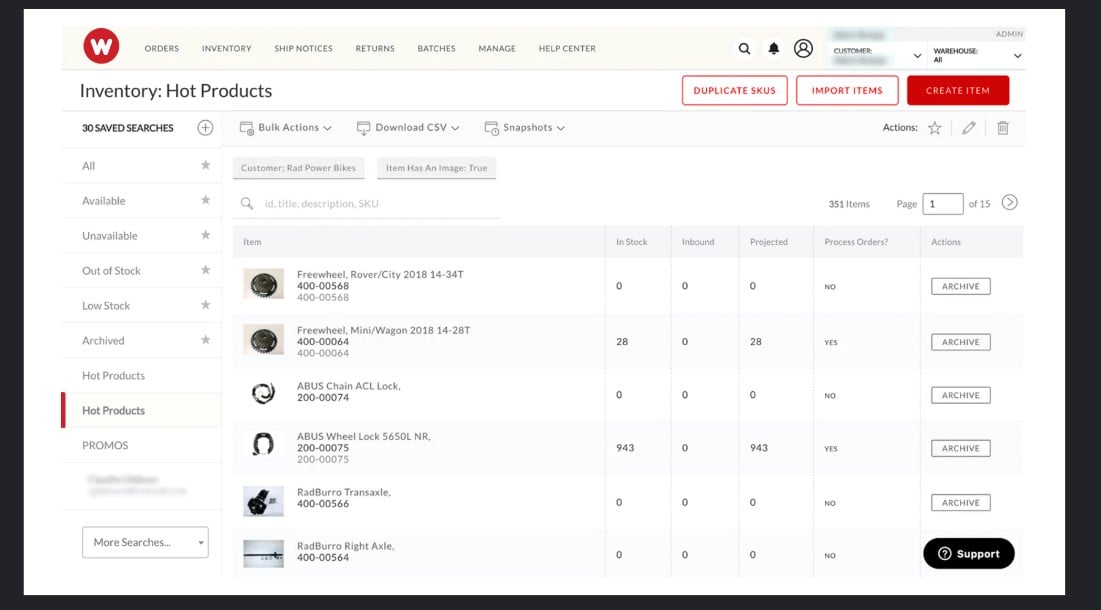Logistics
Warehousing & Fulfillment
Transportation
E-commerce
E-commerce Fulfillment Services
Lease & Maintenance
Semi Trucks
Supply Chain Technology
Logistics
E-commerce
Lease & Maintenance
Buy Used Trucks
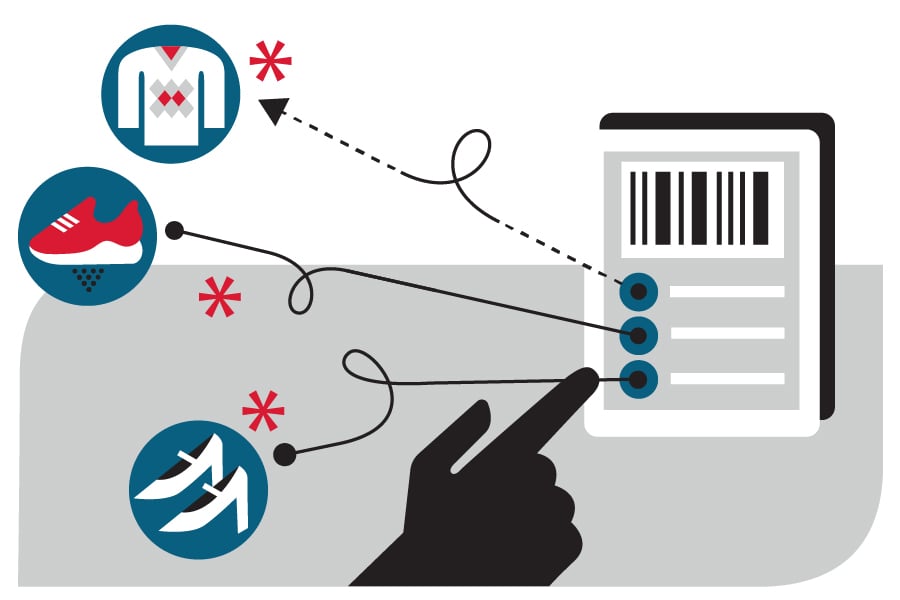
Mustard and ketchup, spaghetti and meatballs, peanut butter and jelly, popcorn and soda - some things just go together. For e-commerce businesses, it's no different. Socks and shoes, skirts and tights, earrings and necklaces, primer and foundation - some products naturally sell better together.
What if we told you there was a way to boost sales, clear out excess inventory, and build customer loyalty with complementary products? There is - it's called product bundling.
In this blog, we're covering everything that e-commerce brands need to know about product bundling: what it is, why it matters, what to be aware of when building a strategy, and more.
Let's get started!
Product bundling is a strategy where brands combine complementary products under one SKU and sell them (usually at a discounted price). The goal? To encourage customers to buy more items.
Product bundling works because it's convenient. Think of it this way: You're shopping for a new suitcase and come across a luggage set complete with packing cubes, a weekender tote, and a carry-on bag. It's much easier (and possibly cheaper) to purchase this bundle, rather than scouting out each item separately.
For the consumer, it's a much more seamless shopping journey. For the brand, it's an easier sell with reduced marketing and distribution costs (we'll get into this later!)
Product bundling and kitting appear very similar. But while they each assemble multiple products to be sold together, they differ in how they are prepared during the e-commerce fulfillment process. Kits are typically prepared by the fulfillment team in advance of orders. This means they are assigned a single SKU for associates to pick directly, and may come in a branded box or promotional packaging.
Product bundles, on the other hand, can be prepped at the same time the order is being fulfilled. For example, if a customer purchases a 'complete the look' outfit from a brand, the associates may have to pick each item within that outfit separately to complete the bundle, especially with different size and color variations.
For example, DTC apparel brand Lulu's offers a 'complete the look' section right on the product page, linking back to accessories that are showcased in the product pictures:
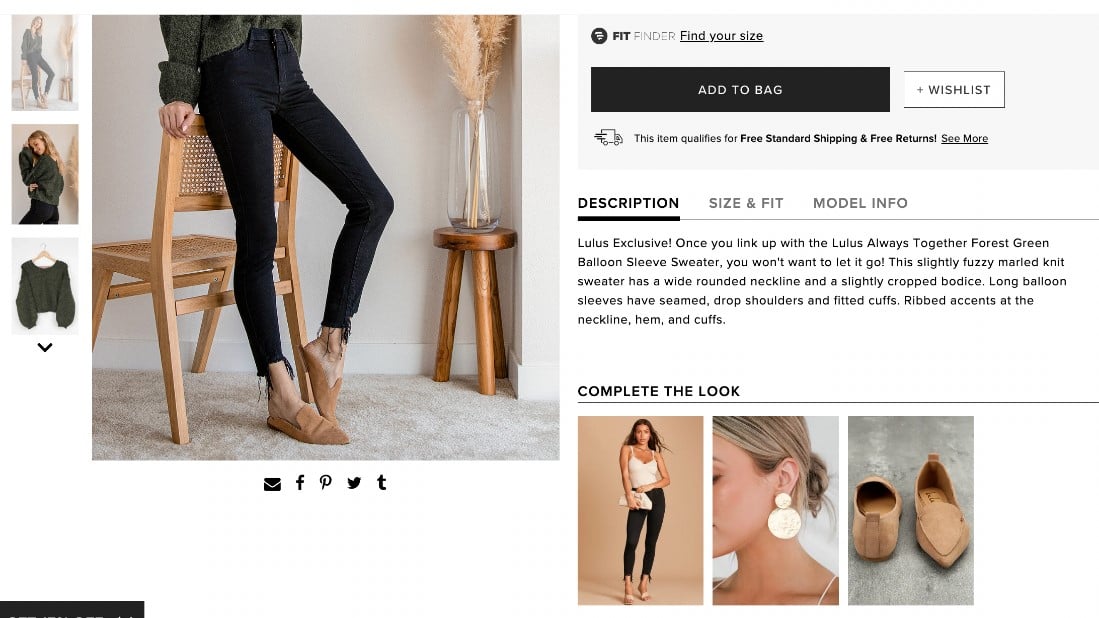
When brands create product bundles, they immediately increase their average order value. How? Grouping items will boost the number of products purchased at one time, in return increasing the average amount spent on each order.
For example, when a parent purchases a bundle of notebooks, erasers, and pencils during the back-to-school season, they may end up spending more within one purchase. However, their perceived value is lower because they're getting more bang for their buck than if they were to purchase all products separately.
The more product bundles, the more product offerings! When brands group items together at a lower price, it's an entirely new 'product' for their customers to choose from. For example, Glossier offers 'duos' at their online store that consist of a mix of makeup and skincare products that designed to be used together.
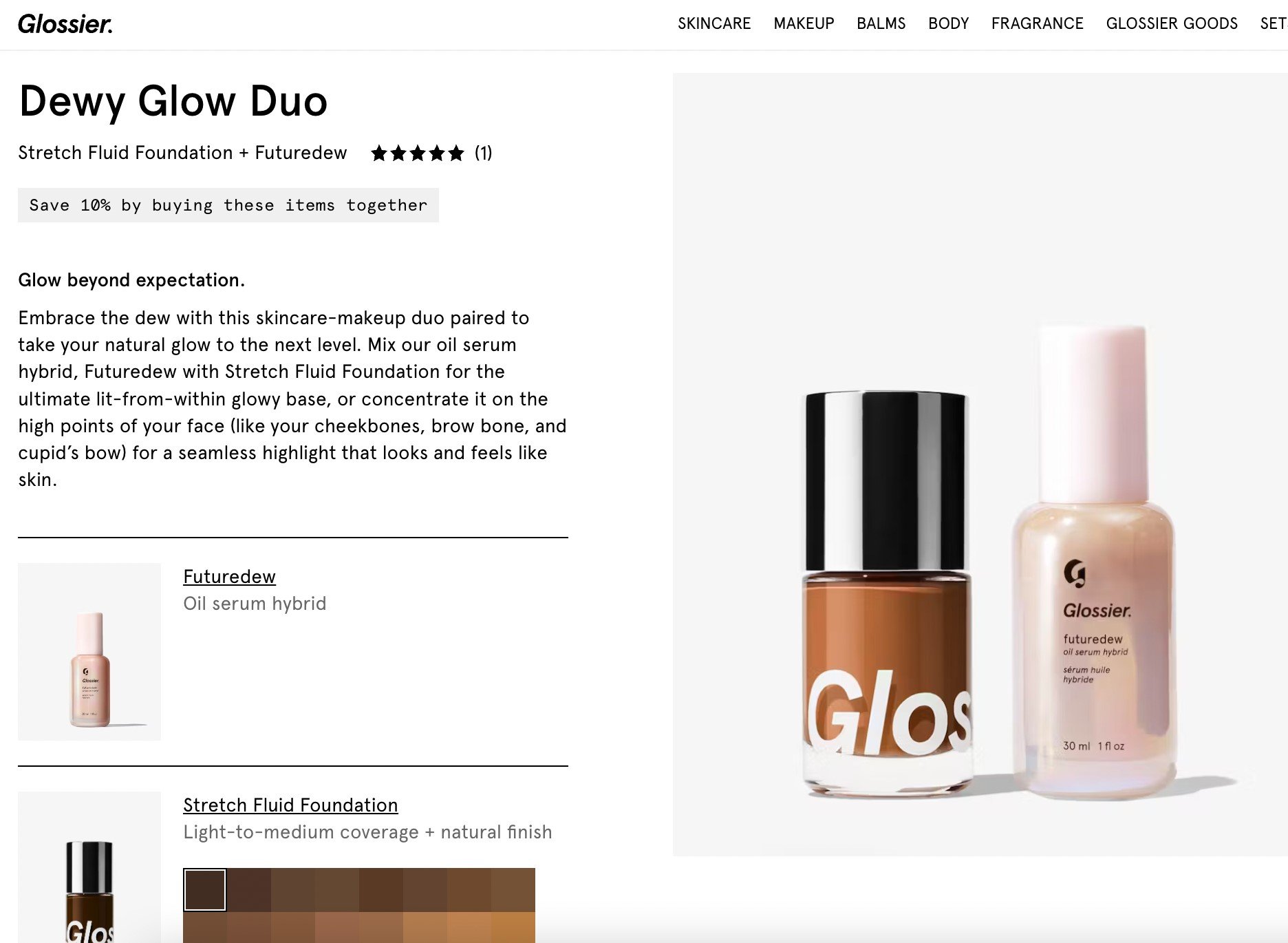
This means Glossier can now market two products at once (a cost-effective alternative to marketing both products separately). Plus, they're incentivizing customers who purchase 'duos' by offering the bundle at a lower price than if they would have purchased separately.
Product bundles are a great way to get rid of excess inventory. Apparel brands that are seeing a peak in sales of a popular sweater may be able to pair it with a few accessories that haven't been turning over as quickly. By offering the products as a bundle, consumers will be more likely to purchase all of the products at once rather than seeking each item out separately.
Plus, it cuts out any additional searching that the customer might have to do, effectively creating a smoother shopping journey. This works especially well with complementary products - a pair of boots that matches a sweater, a skirt that complements a top, earrings to go with a wedding guest dress.
Pair a forgotten product with a more popular one and what do you get? Two popular products.
Similarly to clearing out older or slower-moving products, product bundling is a perfect way to spotlight and boost sales of underperforming inventory.
There are a few ways that brands can spotlight inventory - they can choose to recommend products in a 'shop the look' or 'complete the look' section, they can link products directly in the photos, or they can offer a 'save with sets' and have bundle boxes ready for purchasing.
There are many ways to bundle products, and brands will need to figure out the best product bundling strategy for their company to maximize earnings. We've gathered the most common product bundling examples:
Pure bundles contain exclusive items that can only be purchased with the bundle. In other words, items in the bundle aren't sold separately. For example, the Dyson Airwrap offers 6 different attachments that aren't sold elsewhere.
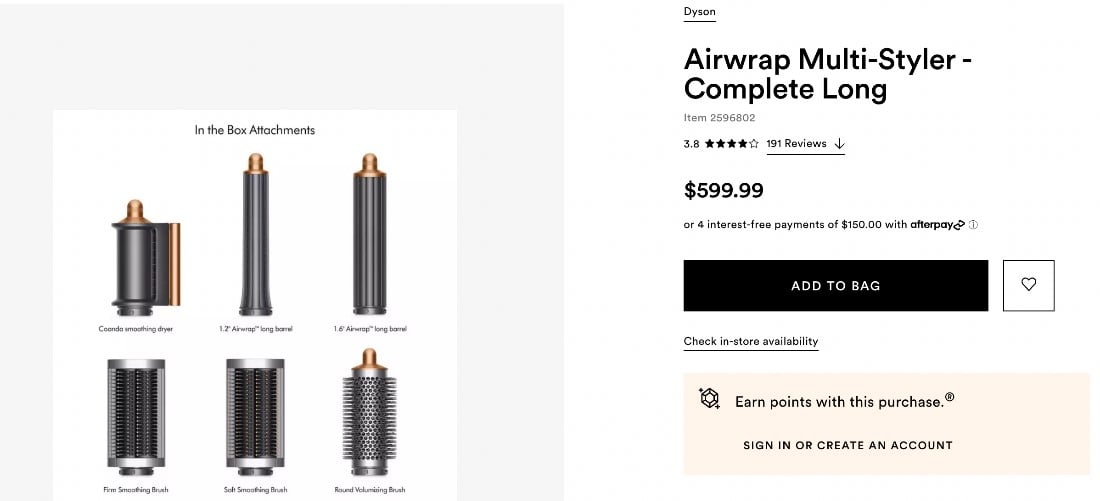
Inventory clearing bundles include slow-moving items that brands are looking to move along and out of the warehouse. Typically, these less-popular items are paired with a fast-moving item with the goal of helping customers discover new products that may be flying under the radar. For example, Aerie pairs popular leggings with a basic sweater, giving customers the option to 'shop the look.'
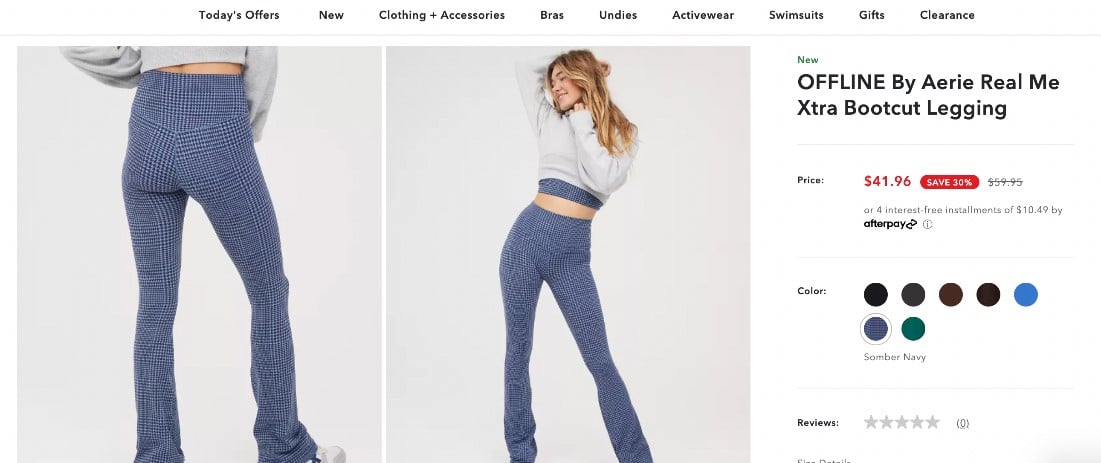
Gift bundles target consumers who are looking to purchase a set of products that could work as a present for family members or friends. The idea is that the bundle is a one-stop shop for a perfect gift. Rather than having to purchase multiple items and spend time putting them together, consumers will simply need to grab the bundle and go.

Mixed bundles enable the customers themselves to pick and choose products to include within their bundles. Brands can designate certain products that are allowed to be included within the bundle. This strategy changes the perceived value of the bundle because consumers have more choice and control over the experience.
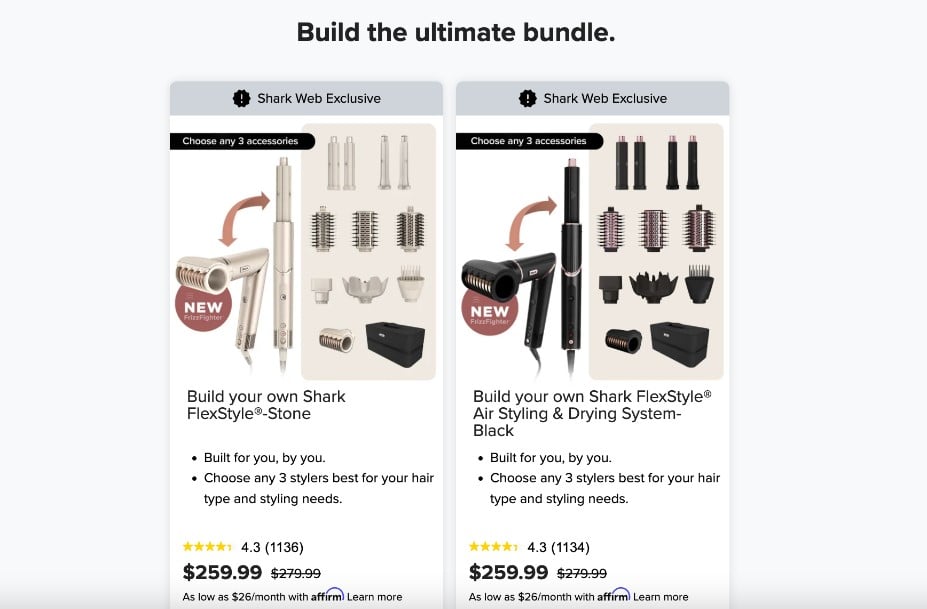
First and foremost, brands that want to run a successful product bundling strategy must understand the goal of their campaign. Whether they're trying to move products out of the warehouse, or they want to incentivize customers to spend more on each order, brands will need to understand the 'why' of product bundling.
These questions and more will help determine the goal and help determine which product bundling will work best with your objective.
Selecting items for product bundles should not be a guessing game. Instead, brands will need to use historical sales data to understand which products are most likely to be bought together. They'll also need to understand the rate at which products are moving in order to pair fast-moving inventory with slower-moving inventory.
Above all, brands will want to make sure that their product bundling is relevant to their consumers. For example, pairing heels with a dress makes perfect sense, while pairing a scarf with a summer tank top may end up confusing customers. To minimize any bundling mishaps, brands can leverage generative AI to help with the selection process and create data-driven product bundles.
When product bundling, brands will need to develop a pricing strategy associated with each bundle. For example, they may have bundles priced without any discounts (i.e. a 'shop the look' button that adds items to the cart).
But, when brands decide to discount their bundles, they'll need to understand each product's gross margin (the cost of goods sold subtracted from the ticket price) and choose an appropriate discount. Typically, businesses take between 10% to 30% off of the subtotal depending on their margins.
Like any new initiative, brands should be engaging in A/B testing to understand which pricing bundles have higher conversions.
Product bundling directly affects the order fulfillment process. Whether a customer selects gift bundles or pure bundles, there will likely be specific packaging or a way of packing the products that differs from a typical order. Brands will need to work closely with the operations team at their fulfillment center to develop standard operating procedures (SOPs) for each product bundle type.
Whether it's a unique packing process or a specific place to pull bundle inventory from, operations associates will need to have clear direction from the brand in order to execute a seamless product bundling in the fulfillment process.
Many brands may find that they only need to promote bundles within their online shops, while other brands may need to take to social media or email channels to garner interest around product bundling. While the actual marketing of bundles is unique for every business, no matter the decision brands will need to have a good plan in place in order to ensure a successful campaign.
The good thing is that, when product bundles are marketed properly, it actually can reduce marketing costs - i.e. brands that are already marketing products within bundles may not have to spend as much time, energy, and money marketing them separately.
Brands that aren't strategic in their approach to product bundling may actually jeopardize sales. How? Cannibalization. Cannibalization happens when product bundles lower demand or profit margin for individual items. For example, if a brand takes its most popular item (say, a jacket) and bundles it with a slow-moving SKU (maybe a scarf) for a discount, customers may flock to the bundle, leaving the individual item struggling to secure sales.
Brands will need to make data-driven decisions to carefully select products and strategize on discounts offered (if any) to minimize any cannibalization.
Brands should never be offering product bundles just to offer them or increase the average order value. Instead, they should be ensuring that their product bundles offer value to their community. Without this genuine value, the bundle is less likely to make an impact or sway customers to purchase. For example, a beauty brand offering unrelated products within a bundle (like pairing eye shadow with a hair creme) could cause some suspicion about the brand's relevancy.
Some product bundles that actually work:
Picture this: you're looking for a new shade of lipstick and you come across a bundle of a few different colors at a discounted price. You quickly purchase the bundle and choose your favorite colors to add. A few hours later, you receive an email that two of the colors you chose are no longer available, and you'll have to choose new ones. A seamless experience? Not quite.
Businesses offering bundled products will need to keep a close eye on their inventory to ensure that these products are still available for bundling. Using a warehouse management system like the Ryder WMS can enable brands to receive notifications when SKUs are running low. This way, action can be taken and customers can always access the bestsellers on your site - no disappointments.
